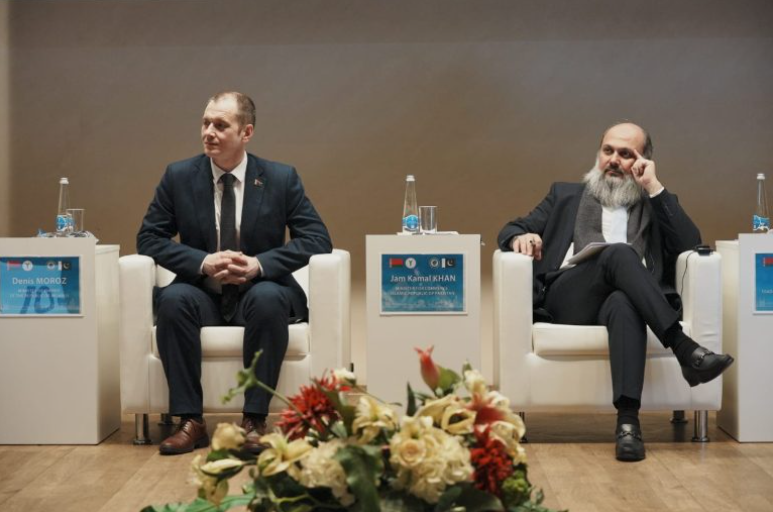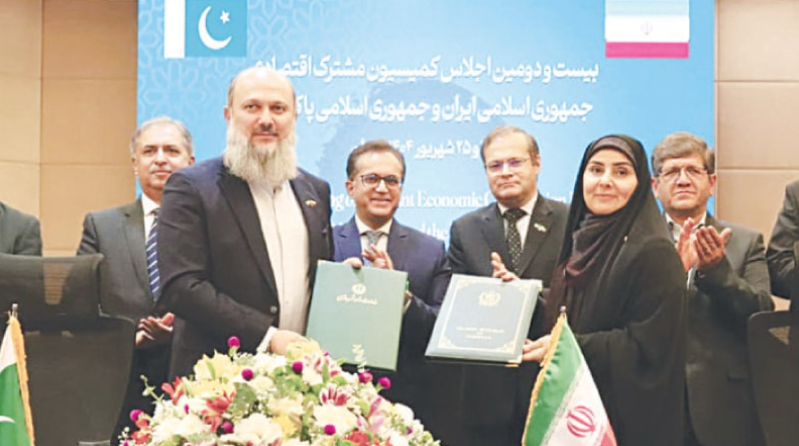Pakistan’s Commerce Minister Jam Kamal Khan met with Iran’s First Vice President Mohammad-Reza Aref. They discussed ways to deepen trade, fix trade barriers, and boost economic ties. That meeting came amid renewed pushes from both Islamabad and Tehran to make bilateral trade more meaningful and balanced.
Pushing for $10 Billion Trade Target Between Pakistan and Iran
One of the major outcomes the two leaders spoke about is raising bilateral trade to US$10 billion. Current trade levels remain far below this target. Minister Khan emphasized that Pakistan wants not only to export more to Iran including agricultural goods, livestock, and raw materials but also to import goods Iran produces well. He suggested both sides should eliminate unnecessary tariffs and customs delays to help markets grow.

Iran’s vice president expressed support, saying the goal reflects a shared political will. He added that reaching this level would require cooperation on banking, logistics, and transit infrastructure. Both sides plan to speed up sessions of the Joint Economic Commission to hammer out practical steps.
Border Facilitation and Trade Barrier Removal
During the meeting, Minister Jam Kamal Khan and Vice President Aref discussed border issues that make trade difficult. They agreed to work together to smooth regulatory cooperation, reduce customs red tape, and improve crossings along the shared border. For example, Pakistani traders worry about delays at the Taftan-Zahedan route, while Iranian side emphasizes efficient inspection and paperwork.
They also touched on logistics: better road, rail, and transit links, better coordination in shipping, and secure financial channels so payments can flow without excessive cost or delay. These changes will help perishable goods, agricultural exports, and small businesses especially, since they suffer most from delays and costs.
Agricultural Trade and Economic Diversification Opportunities
Agriculture emerged as a focus area where Pakistan sees strong potential. Minister Khan proposed increasing exports of rice, bananas, fresh meat, and livestock to Iran. At the same time, Iran showed interest in exporting pesticides, certain processed foods, and industrial inputs to Pakistan. Such exchange could help both economies: Pakistan would grow its agricultural export base; Iran would find new markets for its goods.

They also discussed diversifying trade beyond agriculture. Both governments pointed to sectors like high-end manufacturing, industry, and technical cooperation. Joint ventures, free zones, and investment in value-added production could help shift the trade balance so Pakistan doesn’t only export raw goods but also goods with higher value.
Iran’s vice president acknowledged these ties, saying that cooperation is not just about policy but about improving the livelihoods of people in border regions. When crossings and trade become easier, local markets grow, jobs appear, and daily life improves in places that often feel neglected.
What Remains to Be Done: Challenges and Next Steps
While both sides expressed strong intent, multiple challenges remain. Pakistan must address logistics issues: poor roads, inadequate infrastructure, inefficient border management, and irregularities in customs processing. Iran, for its part, needs reliable banking channels and investor certainty, especially in light of sanctions that affect access to global financial systems.
Also, regulatory cooperation will require continuous dialogue. MoUs or protocols only work if both governments follow up, implement agreed changes, and ensure transparency. Private sector participation will matter: businesses need clear policies, contracts, and confidence that trade rules will remain stable.
Finally, non-trade issues like security, border stability, and external geopolitical pressures may interfere. Both nations agreed to manage shared challenges but success will depend on ability to keep trade separate from political tensions.

